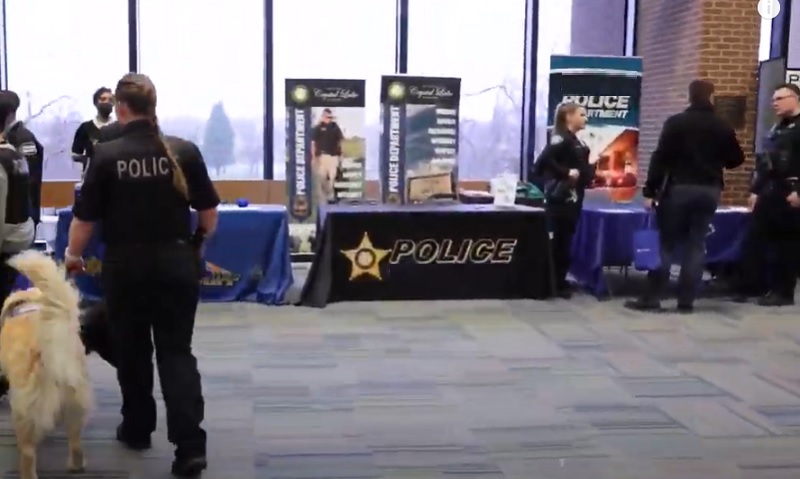
A recent study makes the police recruiting crisis sound even bleaker. A sample headline reads “Recent college grads are ’emotionally’ unprepared for 9 to 5 jobs, study shows”. The research cited was conducted by a team who conducted an online survey of over 1000 adults between the ages of 22 and 28 who had earned a four-year college degree. Among the culprits are social media, gaming, political and cultural divisiveness, pandemic disruptions, and other factors associated with a rise in suicidality, depression, anxiety, and substance abuse.
Other studies indicated that participation in the workforce by men ages 24-54 is matched only with the Great Depression Era, with the biggest drop in the 25-34 age group of men. The obvious and distressing difference is that in 1940 workers were begging for jobs, whereas today jobs are begging for workers. While theoretically, women would make up half of the population of police officers to represent their presence in the population, young men still make up the majority of police recruits in most cadet classes. Their absence from the pool of candidates contributes greatly to the recruiting crisis.
The Army is also suffering from a dearth of qualified volunteers for enlistment. The last fiscal year saw recruiters missing their goal by 25% reducing the branch’s strength by 10,000 soldiers, with projections that will see that shortage double. Youth obesity rates have increased, test scores have declined, and interest in military service has decreased significantly.
When today’s police officers are asked if they would choose police work again or recommend it to others, their answers of “No!” are more frequent and emphatic today than ever before. The number of men and women who are physically and mentally fit, have no significant substance use issues, and have no significant criminality in their background is small enough. Finding those with a spirit for adventure, service, and sacrifice in the face of today’s hypercriticism of police and a general disdain for authority and traditional institutions is a challenge that seems insurmountable.
A host of strategies are being used across the country to address police recruiting. For example, a recent class of 39 Philadelphia police recruits includes several middle-aged graduates, ages 47, 55, and 44. These newly minted police officers, most of who are older than their academy instructors, bring a level of enthusiasm and maturity that can serve an agency well for many years.
In New Orleans, a strategy to replace some police officer roles with civilians to increase the number of officers on the streets netted only three hires out of fifty available positions. Meanwhile, the numbers in uniformed police ranks keep slipping as New Orleans’ murder rate is increasing.
In Seattle, a city in a state that has been notorious for kicking away support for law enforcement, 180 officers left the police department in 2020, and 66 more officers have left so far this year. “I have about 1,080 deployable officers. This is the lowest I’ve seen in our department,” said Police Chief Adrian Diaz. Meanwhile, in a poll that should make politicians shake, the great majority of Seattle voters want more cops and more money for public safety. State legislator Joe Schmick admits “We’re handcuffing (police) and our communities just aren’t as safe as they once were.” Whether recruiters can overcome the recent years’ anti-police sentiments remains to be seen.
LAPD Chief Michel Moore traveled to Glendale, Arizona to visit baseball’s spring training facility. His purpose was not to catch some rising stars before they become famous but to catch the attention of some of those hopefuls who might turn to law enforcement with the famous law enforcement agency. With a personnel shortage of 300 officers, the Chief had hopes that some of the audience might join others from ex-athletes from the NFL and NBA. “Going into that sport, they have attributes like teamwork, athleticism, and emotional intelligence that if they hadn’t thought of coming in and transitioning those into law enforcement, they should,” Moore said.
With bigger cities competing for officers, smaller agencies are losing officers to the allure of higher pay and better benefits. In Michigan City, Indiana, for example, Chief Steve Forker says his agency has become a training ground where officers can gain experience to be hired at an immediate pay increase. “Currently at three years on LaPorte (Indiana 12 miles away) Police Department, they’re at $68,000. Three years at the Michigan City Police Department, currently $54,631. That’s a $14,000 difference.”
Incentives such as better assurance of disability benefits, housing allowances, child care, and hiring bonuses can help. But what the law enforcement profession needs the most is a restoration of public confidence and support to stir the hearts and minds of those who can step up to serve in a noble cause.